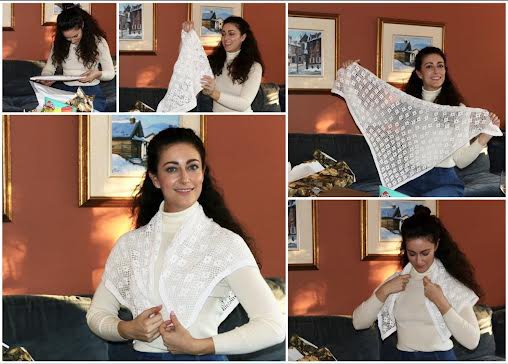Z is for Zia
Last week, at the age of 99, my Zia Ida passed away. She was my Nonna Maria’s last living sibling - just a couple of months short of her 100th birthday celebration.
Both Zia Ida and my Nonna were born in Guardialfiera, a comune in the Province of Campobasso in the Italian region Molise. I’ve only been to our village once as a young girl, and these days, more than ever, am drawn to visiting the place where my father was born, and where my grandparents lived as a young couple before immigrating to Canada.
My Nonna Maria (2nd to the top left) and Zia Ida (bottom right) as young ladies in Guardialfiera. My grandmother noted this was the first photograph of herself she’d ever seen.
When I started Nonna Life, it was a way to pay homage to this part of my culture, while identifying and celebrating specific cultural signifiers that make an Italo-Canadian experience so unique. It was also a way to explore aspects of our family history and traditions that I had maybe never dug into too much. But beyond this, it was also a means of finding connection; with others that may have shared experiences, with my family and with myself.
Though this photo was taken long before I was born, it was taken in my grandparents’ house in Montreal North and we still used the same chairs growing up. I now use one as my office chair. I adore this photo; the sneaky looks and knowing smiles. Zia Ida is standing on the left and Nonna is sitting on the right.
Before I created the Nonna Life brand, I would often go visit my Nonna Maria and would put our conversations up on Instagram Stories - which became popular amongst my friends. I’d get regular DMs about how much these moments with Nonna warmed their hearts and how we all needed love from a Nonna more than ever. After she passed, I realized just how important it is to cherish these moments with our family, especially our elders, as well as the importance of documenting stories, recipes and even design pieces that have sentimental value or meaning.
My Nonna and I. A moment of intergenerational stories.
Both Zia Ida and Nonna Maria learned lace making at a very young age. For as long as I can remember there were always beautifully handmade lace table cloths, bed spreads, pillow covers and doilies all around the house. I took them for granted growing up, but as someone who can barely thread a needle, I’m now completely enthralled with the skill it takes to make these things. I’m also grateful to have inherited a trunk full of lace items that had been made for me when I was a little girl, with the intention for me to use when I got married or bought my own house. My husband and I actually used Nonna’s lace as decor at our wedding reception - a subtle nod to this female led craftsmanship in my family.
A tablecloth that Nonna had made for me. The detail is stunning.
Before Nonna passed, she had started to make a shawl for me but had never finished it. Someone in the family suggested Zia Ida could finish what Nonna has started - it was a beautiful idea and what ended up happening. I now have a beautiful shawl that was made by the hands of both of these women, and I feel so grateful to have this special piece to literally wrap around me.
The shawl both my Zia and Nonna made for me. I got it as a Christmas gift that year.
The last time I saw Zia Ida was on a visit to Montreal, the summer before Covid. My husband was able to meet her which was something really special - she even told me that my Nonna had said she thought he had a good character - a huge stamp of approval from a discerning Italian grandmother.
We had espresso and Zia Ida treated us to some homemade biscotti, in the same kitchen, with the same old school decor that was there my whole life (and probably for decades before it), in a little enclave in St. Leonard, Quebec.
Zia Ida and me, at her home in St. Leonard, 2019.
This generation of women were so vital to preserving Italian culture as well as the traditions of their villages. In doing so they developed an aesthetic that, to me, is so distinctive and (dare I say) iconic too. They were experts at taking care of their homes, mending old things and being as efficient as possible - in the kitchen, in the garden, and in life.
This preservation is what inspires me now. We’re so obsessed with what is new these days.. but we often neglect what is right in front of us. Even if that beauty is simply found in the everyday tile floors that have been there for generations beneath our feet. Sometimes there is beauty in the mundane.






